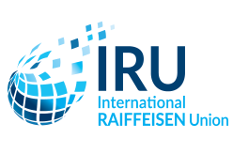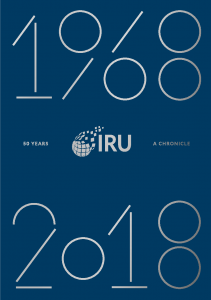50 years of IRU. The environment of the organisation today is completely different from when it was founded in 1968. By 2018, the reality of life in the member countries, the national and international challenges, have changed significantly. The IRU has managed to assert itself while preserving the tried and tested. Over 50 years, the shared ‘Raiffeisen ideology’ formed the cohesive kit that held the core group of members together. So it’s time to take a look back to honour the development of half a century. The essence of the organisation’s history is bundled in the booklet “50 Years of IRU – A Chronicle” which is available here in English and German. >>>

50 YEARS OF IRU – a reason to celebrate

All began with the World Raiffeisen Day...

In 1968, the German Raiffeisen Association (DRV) honoured the 150th birthday of Friedrich Wilhelm Raiffeisen with a WORLD RAIFFEISEN DAY inviting participants from all over the world. Surprised by the worldwide dimension of Raiffeisen‘s cooperative system, cooperative organizations from Europe decided to establish an association as a platform for international exchange.
Foundation of IRU

On 30th March 1968, IRU was founded in Neuwied/Germany as one of the most important domanins of Friedrich Wilhelm Raiffeisen.

The memorandum of association was signed by 19 cooperative organizations from 9 countries. IRU was founded with the purpose of cultivating Raiffeisen’s ideas, propagating them in public and promoting them with modern means. It was supposed to be a network for exchange of experiences between member organizations.
Proclamation of IRU

On June 20, 1968, the 1st President of IRU, Count Christian von Andlau, gave a speech during the proclamation of IRU in the Paulskirche in Franfurt:
„The IRU will not be an ideological union which was founded in memory of our great predecessor (Raiffeisen), but it shall be rather something lively, something practical, something that interests and affects everybody.“
Political Changes

In 1989, the fall of the „Iron Curtain“ brought a new (but difficult) access to cooperatives of the Eastern Bloc states.
1991: A unique Publication

Under the lead of the German Cooperative and Raiffeisen Association (DGRV) the „IRU Guidelines for Cooperatives“ were published. It was the first time in the development sector that a publication was released which contained the collected knowledge of the IRU members.
Difficult 1990's
After a challenging period, IRU went through a phase of reorientation at the end of the 1990s towards cooperative fundamental issues such as member issues, globalization and corporate governance.
Structural Changes

On October 1st, 2010, the current President Mr. Franky Depickere, CEO of Cera in Belgium, was elected during the XIIth General Meeting in Paris, France.
Modernization & Revitalization

The International Year of Cooperatives in 2012 gave a new impetus to IRU to rethink its own objectives. The goal was to develop a modern and attractive appearance to raise the visibility and of the organization. In 2016/17 a new logo was created which illustrates the character of IRU as an international network of idependent members. It was presented at the XIIIth General Meeting in Lucerne, Switzerland.

Digitalization

In 2017 the new IRU website was launched.
2018 - Anniversary Year

In 2018, the year of the 200th birthday of Friedrich Wilhelm Raiffeisen, we celebrate 50 years of IRU. Today, the organization has 52 members from 33 countries all over the world – and is proud on each of them. There is an exciting jubilee year ahead, full of interesting projects.



